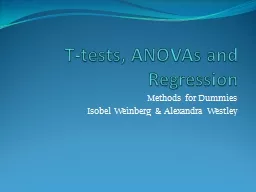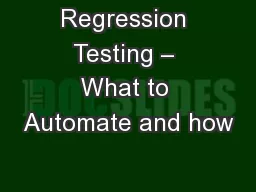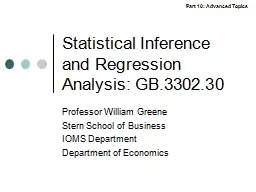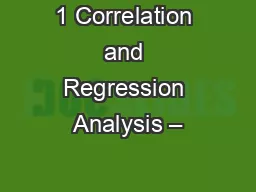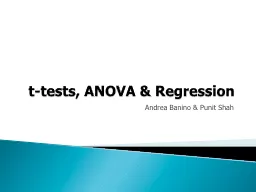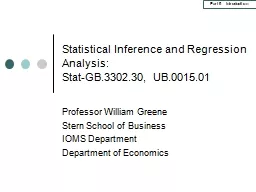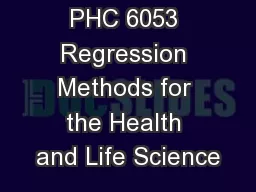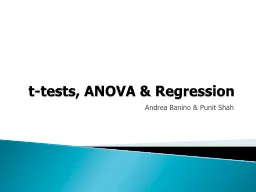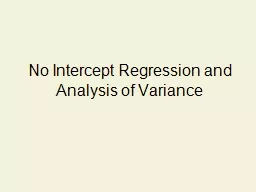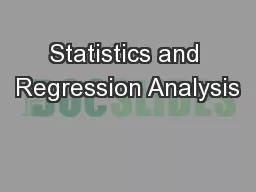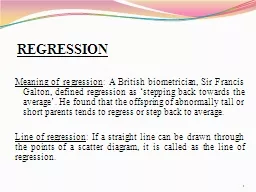PPT-T-tests, ANOVAs and Regression
Author : lindy-dunigan | Published Date : 2016-08-05
Methods for Dummies Isobel Weinberg amp Alexandra Westley Students ttest Are these two data sets significantly different from one another William Sealy Gossett
Presentation Embed Code
Download Presentation
Download Presentation The PPT/PDF document "T-tests, ANOVAs and Regression" is the property of its rightful owner. Permission is granted to download and print the materials on this website for personal, non-commercial use only, and to display it on your personal computer provided you do not modify the materials and that you retain all copyright notices contained in the materials. By downloading content from our website, you accept the terms of this agreement.
T-tests, ANOVAs and Regression: Transcript
Download Rules Of Document
"T-tests, ANOVAs and Regression"The content belongs to its owner. You may download and print it for personal use, without modification, and keep all copyright notices. By downloading, you agree to these terms.
Related Documents

